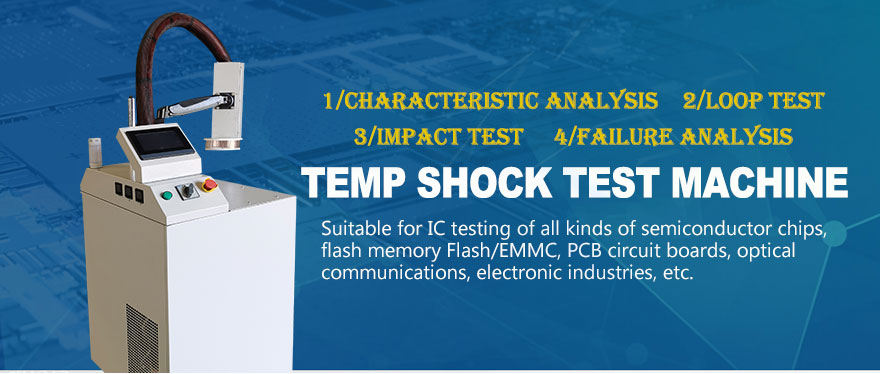Attention points for the use of rapid thermal cycle test airflow machine
The rapid thermal cycling test is a test equipment used in the metal, plastic, rubber, electronic and other material industries. It is used to test the material structure or composite material. It can be tolerated in a continuous environment of high Detect chemical changes or physical damage caused by thermal expansion and contraction of the sample in a short time.
Precautions when installing the rapid thermal cycling test airflow impact machine:
1. It cannot be installed upside down. It must be placed horizontally on the floor and nailed to make the operation door easy to open and reduce the noise when the machine is running. There should be a good ventilated space behind the chassis so that the condenser can perform heat dissipation. And avoid direct sunlight, keep away from heating elements such as stoves, so as not to affect the freezing effect.
2. Although the materials in the rapid thermal cycling test airflow impact machine are all made of stainless steel, wet water may easily cause mechanical parts and electronic control, which will cause adverse effects and reduce efficiency, and should be avoided as much as possible. Where the power supply voltage is too low, an autotransformer should be installed to increase the voltage to the rated value, so that the compressor motor will not be burned because the voltage is too low to start. Please use a dedicated switch for the power switch. Do not use a common SW plug with other electrical machinery. Do not place the cord on the floor or wet place to avoid stepping on it or leakage.
3. During the test, the operating door should not be opened for a long time, so as to prevent the rapid thermal cycling test airflow from impacting the chassis and generating water mist. The inside of the case should be kept clean at all times, and a little lubricating oil can be applied when the outer case is clean.

All types of electronic and non-electronic equipment require temperature cycling and thermal shock testing to ensure that industrial products are not affected by temperature changes and other harsh environmental pressure conditions. Without the use of LN2 or CO2 built-in coolers and air dryers, the temperature range is -80°C to +225°C. Our portable stand-alone heat sensing system only needs to be plugged into a power source. This allows you to easily perform temperature tests on electronic semiconductor IC devices. Applications: Semiconductor, automotive industry, aerospace, electronic testing, optical fiber, sensors, 5G telecommunications. For example, cars have more than 50 sensors, switches and other electronic controls. These components require temperature regulation and rapid temperature cycling in the temperature range of -80°C to +225°C and higher.
 LNEYA Industrial Chillers Manufacturer Supplier -
LNEYA Industrial Chillers Manufacturer Supplier -











